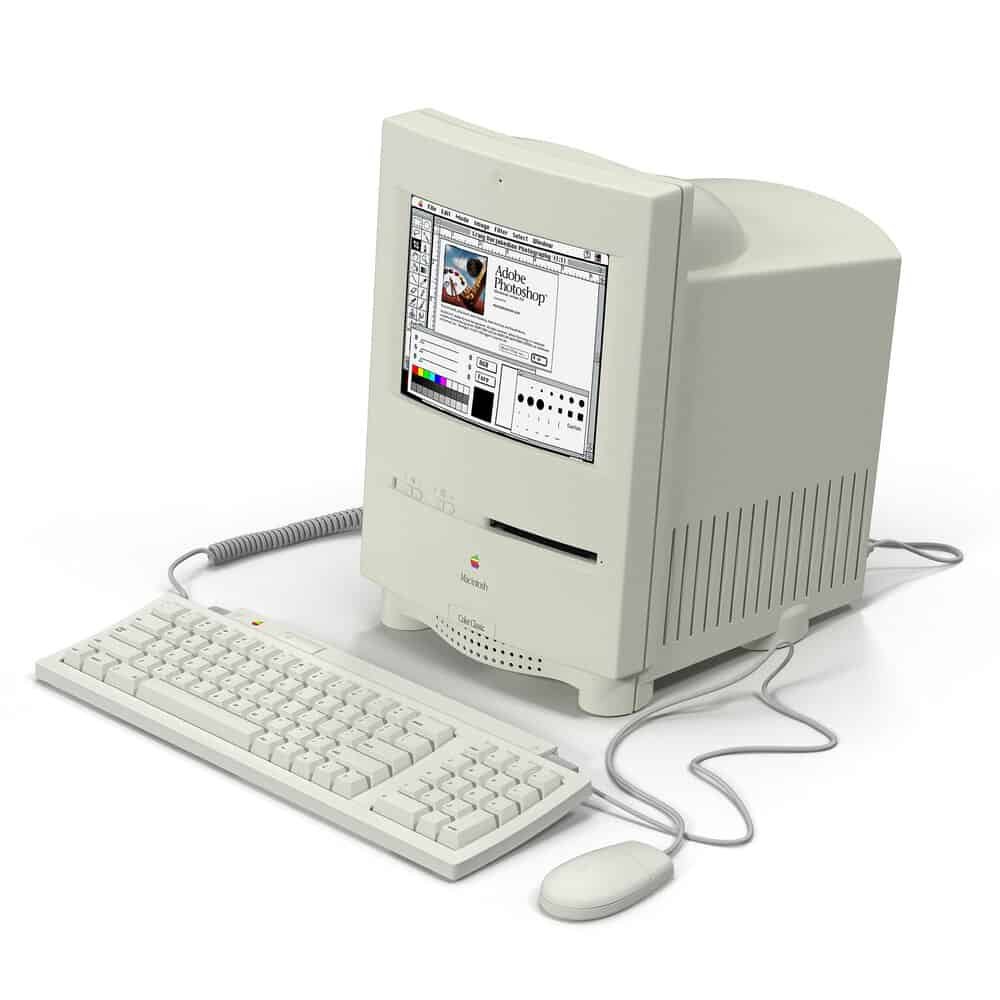Back in 1993, Apple unveiled the Macintosh Performa 250, a personal computer that would go on to make its mark in the company’s history. The Macintosh Performa series was renowned for bringing Apple’s innovative technology to consumers, and the Performa 250 was no exception.
With its powerful specifications and sleek design, it quickly became a beloved machine for those fortunate enough to own one. Today, as we celebrate 31 since its release, let’s take a nostalgic trip down memory lane and explore the legacy of the Macintosh Performa 250.
The Macintosh Performa 250, a version of the Color Classic, captivated users with its compact form factor. Designed to cater to the international market, it was available for purchase outside the United States as part of Apple’s Performa line. Its distinguishing feature was the built-in 10″ Trinitron display from Sony, which delivered vibrant colors and crisp visuals for its time.
The Performa 250 may have been small, but it packed a punch. Equipped with a 16 MHz Motorola 68030 processor and a 68882 FPU coprocessor, it delivered impressive processing power for its era. The 256 KB of VRAM allowed for up to 8-bit color at a resolution of 512 x 384 pixels, with the option to upgrade to 16-bit color by increasing the VRAM to 512 KB. The logic board, similar to the Macintosh LC II, featured a 16-bit LC PDS slot, providing expansion possibilities for users.
With 4 MB of RAM soldered onto the motherboard, the Performa 250 offered a decent starting point. However, users could expand their memory by installing 30-pin SIMMs in matching pairs, with a maximum recognition limit of 10 MB due to the logic board’s constraints. The hard drives, connected via a SCSI bus, offered storage options ranging from 40 MB to 160 MB, allowing users to store their files, documents, and multimedia with ease. Additionally, a 1.44 MB floppy drive came built-in, accommodating the prevalent floppy disks of the time.
The Performa 250 was introduced with System 7.1 pre-installed, accompanied by System Enabler 401. Over its lifespan, it supported various iterations of the Mac operating system, with the final version being Mac OS 7.6.1. Apple’s dedication to providing software support ensured that users could enjoy the latest features and enhancements during the Performa 250’s time in the spotlight.
As we commemorate the 31 years of the Macintosh Performa 250, we remember a computer that truly made a mark on Apple’s rich history. This compact powerhouse provided users with impressive processing capabilities, a vibrant display, expandable memory, and ample storage options.
While the Macintosh Performa 250 is no longer available for purchase, its legacy lives on in the hearts of those who were fortunate enough to experience its technological prowess. As we embrace the innovations of today, let us not forget the pioneers that paved the way for our digital landscape.

Macintosh Performa 250 Details
| Introduced | February 1, 1993 |
| Discontinued | May 1, 1994 |
| Model Identifier | 49 |
| Model Number | M1600 |
| Order Number | M1601LL/A M1602LL/A M1605LL/A |
| Original Price | $1,390 |
| Colors | Platinum |
| Weight | 22.5 Ibs. 10.205 KG |
| Dimensions | 14.5” H x 9.9” W x 12.6” D 36.83 cm H x 25.14 cm W x 32 cm D |
Mac Performa 250 Tech Specs
Processor
| Processor | Motorola 68030 |
| Processor Speed | 16 MHz |
| Architecture | 32-bit |
| Number of Cores | 1 |
| System Bus | 16 MHz |
| Cache | 0.5 KB L1 |
| Coprocessor | Motorola 68882 FPU (Optional) |
Storage & Media
| Storage | 40 MB 80 MB 160 MB |
| Media | 1.44 MB floppy |
Memory
| Built-in Memory | 4 MB |
| Maximum Memory | 10 MB |
| Memory Slots | 2 – 30 pin SIMM |
| Minimum Speed | 100 ns |
| ROM | Unknown |
| Interleaving Support | No |
Display
| Built-in Display | 10” RGB 8-bit CRT display (256 colors) |
| Resolution | 512 x 342 |
| Pixel Density | Unknown |
Graphics
| Graphics Card | None |
| Graphics Memory | 256 KB 512 KB |
| Display Connection | N/A |
Expansion
| Expansion Slots | 1 – LC PDS |
| Hard Drive Interface | SCSI |
Connections
| Ethernet | None |
| Modem | None |
| ADB | 2 |
| Serial | 2 |
| SCSI | 1 – DB-25 |
| Floppy Port | None |
| Audio In | 1 – 3.5-mm analog input jack |
| Audio Out | 1 – 3.5-mm analog output jack |
| Display | N/A |
Software
| Original OS | System Software 7.1 |
| Maximum OS | System 7.5.5 |
| Firmware | Macintosh ROM |
Power
| Backup Battery | 3.6 V lithium |
| Maximum Continuous Power | 100 W |
| Line Voltage | N/A |
Further Reading and References
- Macintosh Performa 250: Technical Specifications – Apple Support
- Macintosh Performa – Wikipedia
- Apple’s Performa Line, 1992 to 1997 – Low End Mac
Disclaimer: The data presented in this article is under continuous development and has been manually collected from various sources based on their availability. The author of this article may revise this dataset as additional research is conducted and reviewed. Please note that the information is provided “as is” and “as available” without express or implied warranties. The author cannot be held responsible for any omissions, inaccuracies, or errors in the published information. Any warranties relating to this information are hereby disclaimed.
Last updated: June 28, 2023
